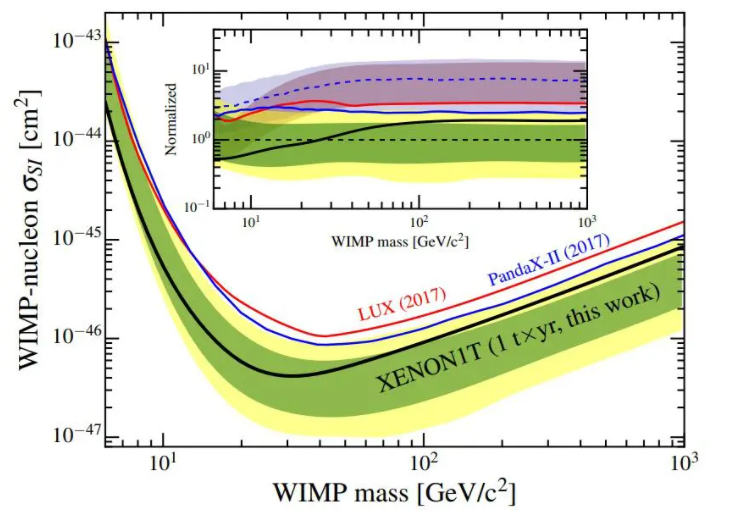If dark matter exists as a vast halo of particles in our galaxy, it is continually traveling past us. But how much is it?
Dark matter, according to the hypothesis, is made up of particles scattered across space, gathered in a halo around practically every galaxy. That dark matter should be everywhere in the Milky Way, even traveling through our bodies on a constant basis, much like neutrinos. The whole quantity of dark matter that passes through your body in a human lifetime does not even equal up to one gram. Maybe that’s why it’s so difficult to spot?
Everything was hotter, denser, and more uniform in the early Universe than it is now. Early on, there were areas of somewhat higher-than-average density, indicating a greater-than-average quantity of matter. Gravity preferentially pulls more matter to this location, while radiation strives to drive that matter back out.
If all we had was ordinary matter and its component particles to go along with this radiation, the galaxies and galaxy clusters we see today would be quite different. However, if dark matter exists in a 5-to-1 ratio with regular matter, we may hypothetically recreate the cosmic web of structure to match our observations and measurements.
The presence of dark matter means that any major structure that arises in the Universe, such as a galaxy, will be surrounded by a vast, diffuse halo of dark matter. Normal (atom-based) matter will congregate at the inner reaches of each galaxy, since normal matter can collide and interact with both itself and radiation. Dark matter, on the other hand, just goes through everything: itself, regular matter, photons, and so on.
Dark matter particles have no mechanism of losing their massive momentum unless they interact gravitationally. Each dark matter particle may have passed past the galactic center barely a dozen times by the present day in the whole history of the Universe.

On the largest scales, dark matter dominates the Universe. But where we are, just 25,000 light years from the galactic center, normal matter is locally more abundant than dark matter. Here on Earth, in our Solar System, that situation is even more severe than in interstellar space. The density of a human being is comparable to that of water: 1000 kilograms per cubic meter (kg/m3).
Dark matter? Even based on the most realistic simulations that we can concoct, the local density of dark matter where we are is many times smaller: about 10-21 kg/m3. If you were to add up all the dark matter inside all the humans on Earth at any one instant, it would come out to no more than a single nanogram.

If you were to take all the dark matter in the entire Solar System, out to the orbit of Neptune, and total it up, it would only add up to about 1017 kg: the mass of a modestly large asteroid. And yet, because it doesn’t have the collisional interactions that normal matter does, it doesn’t move with the Solar System. It doesn’t:
- orbit the Sun,
- move with the Sun or the other stars around the galactic center,
stay in a plane, - or revolve with the Milky Way’s disk.
- In other words, this matter moves under the influence of gravity, relative to Earth, at pretty rapid speeds!
All you need are four integers that you can multiply together to find out how much dark matter travels through you in a particular length of time. They are as follows:
- the dark matter density,
- the surface area of a person that dark matter can strike,
- the dark matter’s speed,
- and how long you want to know the answer for.
We can receive the answer immediately away after we’ve calculated the density of dark matter — which we already know, at 10-21 kg/m3.
A average person has a surface area of 1.7 square meters. Because dark matter enters at a random angle, we may do a simple calculation and determine that the area the dark matter “sees” is more like 0.6 m2.
Our Solar System travels at roughly 200 km/s around the galactic center, but infalling dark matter should be travelling at a far faster rate: closer to 350 km/s. Overall, dark matter flows at a speed of roughly 400 km/s compared to a person on Earth.
And we can do it at any time: every second, every year, or over the duration of an average (80-year) human lifetime.

- Even while you only have around 10-22 kilos of dark matter within you at any one time, far bigger quantities are continually moving through you.
- Every second, around 2.5 10-16 kilos of dark matter will flow through your body.
- Every year, 10-8 kilos of dark matter pass through you.
And throughout the course of a human lifetime, you’ve been exposed to little under 1 milligram of dark matter.
What may seem to be a negligible sum accumulates over time.

The fact that these numbers are so big educates us not just about our bodies and what’s within them, but also about how we can imagine hunting for dark matter. We know the amount of dark matter mass that goes through not just a person, but any detector of a certain volume, whether it’s composed of very low-mass or extremely high-mass particles. We can determine the number of particles that pass through anything if we assume we know the mass of dark matter.
For decades, we’ve been creating bigger and more sensitive detectors in an effort to test any microscopic interactions that may occur between dark matter and regular matter. Today’s most sophisticated detectors hunt for evidence of recoil or other interaction with atoms with massive nuclei in extraordinarily huge masses. So yet, all direct detection approaches have shown no results.

To the best of our understanding, dark matter exists in all directions. We can feel its gravitational attraction even if it is undetectable to our eyes. It goes through all stuff in the Universe, including humans, as if it didn’t exist at all. To the best of our understanding, there are no collisions or interactions other than the impact on twisting spacetime. It does not clump, cluster, or develop structure in the same way that dark atoms or molecules do.
We’ll be able to identify it if it has even the faintest indication of the capacity to collide with either regular matter or radiation. A milligram of dark matter will have traveled through your body during the course of your life. We’ll have a chance if even one dark matter particle connects with one proton or electron in your body. It’s difficult to ask for more when it comes to dark matter, one of the Universe’s greatest mysteries.





